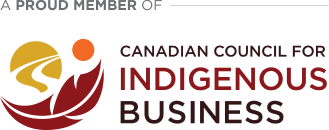Your cart is currently empty!

ISO 17294:2023
ISO 17294:2023 Water quality – Application of inductively coupled plasma mass spectrometry (ICP-MS) – Part 2: Determination of selected elements including uranium isotopes
CDN $273.00
Description
This document specifies a method for the determination of the elements aluminium, antimony, arsenic, barium, beryllium, bismuth, boron, cadmium, caesium, calcium, cerium, chromium, cobalt, copper, dysprosium, erbium, gadolinium, gallium, germanium, gold, hafnium, holmium, indium, iridium, iron, lanthanum, lead, lithium, lutetium, magnesium, manganese, mercury, molybdenum, neodymium, nickel, palladium, phosphorus, platinum, potassium, praseodymium, rubidium, rhenium, rhodium, ruthenium, samarium, scandium, selenium, silver, sodium, strontium, terbium, tellurium, thorium, thallium, thulium, tin, titanium, tungsten, uranium and its isotopes, vanadium, yttrium, ytterbium, zinc and zirconium in water (e.g. drinking water, surface water, ground water, waste water and eluates).
Taking into account the specific and additionally occurring interferences, these elements can be determined in water and digests of water and sludge (e.g. digests of water as described in ISO¬†15587–1 or ISO¬†15587–2).
The working range depends on the matrix and the interferences encountered. In drinking water and relatively unpolluted waters, the limit of quantification (LOQ) lies between 0,002 µg/l and 1,0 µg/l for most elements (see Table 1). The working range typically covers concentrations between several ng/l and mg/l depending on the element and specified requirements.
The quantification limits of most elements are affected by blank contamination and depend predominantly on the laboratory air-handling facilities available on the purity of reagents and the cleanliness of glassware.
The lower limit of quantification is higher in cases where the determination suffers from interferences (see Clause¬†5) or memory effects (see ISO¬†17294–1).
Elements other than those mentioned in the scope can also be determined according to this document provided that the user of the document is able to validate the method appropriately (e.g. interferences, sensitivity, repeatability, recovery).
Edition
3
Published Date
2023-10-18
Status
PUBLISHED
Pages
35
Format 
Secure PDF
Secure – PDF details
- Save your file locally or view it via a web viewer
- Viewing permissions are restricted exclusively to the purchaser
- Device limits - 3
- Printing – Enabled only to print (1) copy
See more about our Environmental Commitment
Abstract
This document specifies a method for the determination of the elements aluminium, antimony, arsenic, barium, beryllium, bismuth, boron, cadmium, caesium, calcium, cerium, chromium, cobalt, copper, dysprosium, erbium, gadolinium, gallium, germanium, gold, hafnium, holmium, indium, iridium, iron, lanthanum, lead, lithium, lutetium, magnesium, manganese, mercury, molybdenum, neodymium, nickel, palladium, phosphorus, platinum, potassium, praseodymium, rubidium, rhenium, rhodium, ruthenium, samarium, scandium, selenium, silver, sodium, strontium, terbium, tellurium, thorium, thallium, thulium, tin, titanium, tungsten, uranium and its isotopes, vanadium, yttrium, ytterbium, zinc and zirconium in water (e.g. drinking water, surface water, ground water, waste water and eluates).
Taking into account the specific and additionally occurring interferences, these elements can be determined in water and digests of water and sludge (e.g. digests of water as described in ISO 15587-1 or ISO 15587-2).
The working range depends on the matrix and the interferences encountered. In drinking water and relatively unpolluted waters, the limit of quantification (LOQ) lies between 0,002 µg/l and 1,0 µg/l for most elements (see Table 1). The working range typically covers concentrations between several ng/l and mg/l depending on the element and specified requirements.
The quantification limits of most elements are affected by blank contamination and depend predominantly on the laboratory air-handling facilities available on the purity of reagents and the cleanliness of glassware.
The lower limit of quantification is higher in cases where the determination suffers from interferences (see Clause 5) or memory effects (see ISO 17294-1).
Elements other than those mentioned in the scope can also be determined according to this document provided that the user of the document is able to validate the method appropriately (e.g. interferences, sensitivity, repeatability, recovery).
Previous Editions
Can’t find what you are looking for?
Please contact us at:
Related Documents
-

ISO 8467:1993 Water quality – Determination of permanganate index
CDN $76.00 Add to cart -

ISO 21676:2018 Water quality – Determination of the dissolved fraction of selected active pharmaceutical ingredients, transformation products and other organic substances in water and treated waste water – Method using high performance liquid chromatography and mass spectrometric detection (HPLC-MS/MS or -HRMS) after direct injection
CDN $273.00 Add to cart -

ISO 21675:2019 Water quality – Determination of perfluoroalkyl and polyfluoroalkyl substances (PFAS) in water – Method using solid phase extraction and liquid chromatography-tandem mass spectrometry (LC-MS/MS)
CDN $312.00 Add to cart -

ISO 9174:1998 Water quality – Determination of chromium – Atomic absorption spectrometric methods
CDN $115.00 Add to cart







